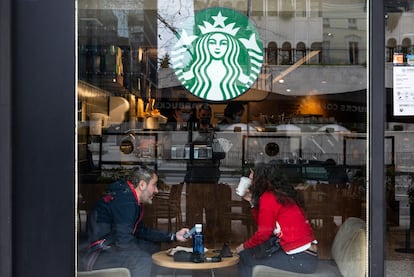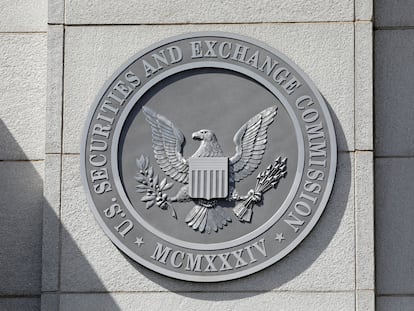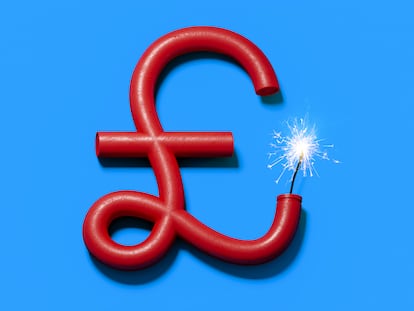Starbucks of the future: More food, cold drinks and blockchain
The company continues to reinvent itself with new products, more automation and digital services


When former Starbucks CEO Howard Schultz was considering whether to expand Starbucks outside the United States, he first thought of Japan, but his board of directors advised him to hire a consulting firm because the management team had no international experience. The consulting firm’s report was blunt – expansion into Japan would be a complete failure. The company’s no-smoking policy, the country’s high rental costs, and the Japanese aversion to eating out would doom the initiative. But in 1996, Schultz decided to take a chance and partnered with a local company to open stores in hot and humid Tokyo. At the time, Starbucks still only served hot coffee, which would be their excuse if the venture failed. The day before the grand opening, Schultz told his Japanese partners through an interpreter, “It’s going to be a rough day,” which the interpreter timidly translated as, “It’s going to be a historic day.”
Schultz didn’t sleep well that night, but when he arrived to open the store in Tokyo’s Ginza shopping district, he saw a line of customers stretching around the corner. At first, he thought someone had hired move extras to fill out the crowd, but someone told him that many of the eager customers had been waiting in line all night. “We cut the tape and a young man, who didn’t speak a word of English, rushed to the coffee bar and ordered a double tall latte. That’s when we knew that we were okay,” said Schultz. Today, Starbucks has 400 locations in Tokyo and 1,800 throughout Japan. In mid-September, Schultz opened the Starbucks Investor Day in Seattle (Washington, USA) with this anecdote, as a prelude to the company’s reinvention plan for the future.
Howard Schultz is credited with transforming the small, Seattle-based coffeehouse chain that in 1987 had just a dozen coffee shops into a global icon with a $100 billion market capitalization. It has 35,000 locations in 80 markets and more than 400,000 employees, including franchises. Schultz has retired twice – in 2000 and 2017. He returned in 2008 to lead Starbucks out of the global financial crisis by closing unprofitable locations, revamping his management team, and implementing new growth initiatives such as the loyalty program and expansion into China. Now Schultz is back again after another global crisis – the Covid-19 pandemic – but this time he vowed to stay for just one year. In April 2023, he will be succeeded by Laxman Narasimhan, a former Pepsico executive. Narasimhan, who made his debut at the Investor Day, told the audience, “I came to this country with nothing. I am the epitome of the American dream. My resilience defines me.”
Schultz, who promises that his third retirement will be his last, unveiled a road map to Starbucks’ future for the investors and analysts assembled at the company’s Seattle headquarters. It was a six-hour marathon of presentations liberally sprinkled with references to reinvention. “Don’t worry,” joked a Starbucks executive, “we have plenty of coffee.”
The Investor Day included announcements of new products, like next winter’s big launch of a pistachio, cocoa and citrus-flavored cold brew (Pistachio Creme Cold Brew), demonstrations of time-saving coffee makers, and optimistic business initiatives with promises of multi-million dollar dividends.
“We’re reinventing the company, but we’re not reinventing what we do. We’re just reinventing how we do it,” said Schultz. It’s a reinvention that actually began during the pandemic, when Starbucks had a negligible home delivery service. The company now receives 25% of its orders via cellphone apps, and 50% of its business is take-out.
Eating at Starbucks
Starbucks says that most of its customers are millennials or Generation Zers who prefer cold beverages, which account for 70% of the company’s US sales (up to 80% in the summer). Cold beverages aren’t the only products driving sales. “More and more customers are looking for food at Starbucks. It’s another growth accelerator,” said Brady Brewer, chief marketing officer at Starbucks. Not long ago, he said, only one in five customers ordered something to eat along with their beverage. Now it’s double that – 40%. “We’re just getting started,” said Brewer. The company is currently testing products like freshly baked pastries, salads, vegetarian meals and eggs. It’s also betting on sales of ready-made products in supermarkets and other channels as another avenue for growth.
The Starbucks Rewards loyalty program already has 58 million members, almost half of which are in the United States (one in 10 American adults). The loyalty program currently only rewards purchases made in Starbucks-owned stores, but the company is planning to extend it to all its franchises in hotels, airports, supermarkets and other locations. Starbucks is also set to begin a non-fungible token (NFT)-based loyalty program with blockchain technology. The program, called Starbucks Odyssey, is designed to allow customers to both earn and purchase digital assets that unlock exclusive experiences and rewards.
A new initiative – Starbucks Connect – aims to boost mobile app orders. The company has already teamed up with Uber Eats, and will begin delivering orders in the US with DoorDash in 2023. Starbucks will open dedicated delivery-only locations to ease the burden on its busiest shops. “No matter what time it is, Starbucks can serve you in your car, at home, at the beach or wherever you are,” said Brewer, who also stressed the power of the Starbucks brand. “Last December, Starbucks sold more gift cards than Apple, Google, Home Depot and Target combined.” In the US, nearly half of consumer spending at Starbucks is prepaid, which provides a huge strategic advantage. The company also has a new initiative called Rewards Together, an alliance with other loyalty cards for earning and redeeming points at airlines, clothing retailers, hotels and other brands. The company expects to launch its first Rewards Together partnership in October.
The stores themselves will also undergo renovations. “It’s clear that our physical stores have to change. They were built for a different era and have to modernize to keep up with the times,” said John Culver, chief operating officer at Starbucks. The focus will be on automation of ordering systems and updated production equipment. The company demonstrated its new Siren System, which will cut the time it takes to make a Frappuccino from 83 seconds to 35 seconds. A new machine will make cold brew coffee in seconds, instead of the current 20-hour steeping process. Quality will not suffer, promised Schultz. “We won’t take a single step backwards.”
“Reinvention will usher in a new era of growth,” claimed Rachel Ruggeri, chief financial officer at Starbucks. More sales at existing coffee shops, new openings and higher margins will produce annual profit increases of 15%-20% for the next three years, up from our previous forecast of 10%-12%. The company plans to have 45,000 locations by 2025 and 55,000 locations by 2030, with most new stores located in China. “We expect to open almost eight locations a day,” said Ruggeri. Starbucks will distribute 50% of its profit in dividends, which combined with stock buybacks will provide $20 billion in shareholder value over the next three years.
Schultz, who turned 69 this year, has retaken the helm at a time when Starbucks is facing labor unrest in the US. The company has fought back against barista unionization with admittedly sketchy tactics, and now acknowledges that it made mistakes with its workers, whom they euphemistically call “partners.”
“We have a trust deficit with our associates. Not all of them, but too many, especially those that wear the green apron – our store-based associates. We have not lived up to our obligations,” admitted Frank Britt, chief strategy officer at Starbucks. The company is promising pay increases, easier digital tipping, career planning tools, more paid leave, greater work schedule flexibility and other improvements in working conditions. It’s also finally showing some openness in negotiating with workers who want to unionize, demonstrating that reinvention has also arrived at the human resources department.
Tu suscripción se está usando en otro dispositivo
¿Quieres añadir otro usuario a tu suscripción?
Si continúas leyendo en este dispositivo, no se podrá leer en el otro.
FlechaTu suscripción se está usando en otro dispositivo y solo puedes acceder a EL PAÍS desde un dispositivo a la vez.
Si quieres compartir tu cuenta, cambia tu suscripción a la modalidad Premium, así podrás añadir otro usuario. Cada uno accederá con su propia cuenta de email, lo que os permitirá personalizar vuestra experiencia en EL PAÍS.
¿Tienes una suscripción de empresa? Accede aquí para contratar más cuentas.
En el caso de no saber quién está usando tu cuenta, te recomendamos cambiar tu contraseña aquí.
Si decides continuar compartiendo tu cuenta, este mensaje se mostrará en tu dispositivo y en el de la otra persona que está usando tu cuenta de forma indefinida, afectando a tu experiencia de lectura. Puedes consultar aquí los términos y condiciones de la suscripción digital.
More information
Archived In
Últimas noticias
There is as much life left to discover on planet Earth as that which is already known
Dozens presumed dead, around 100 injured in fire at Swiss Alps bar during New Year’s celebration
Is porn for women different from conventional porn? We spoke to those who make it
Cartagena de Indias is sinking: What can the city do to mitigate it?
Most viewed
- David King, chemist: ‘There are scientists studying how to cool the planet; nobody should stop these experiments from happening’
- Reinhard Genzel, Nobel laureate in physics: ‘One-minute videos will never give you the truth’
- Oona Chaplin: ‘I told James Cameron that I was living in a treehouse and starting a permaculture project with a friend’
- Sinaloa Cartel war is taking its toll on Los Chapitos
- The Interoceanic Train, the Mexican alternative to the Panama Canal










































